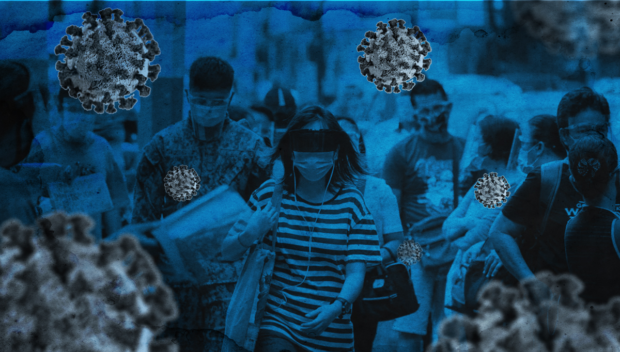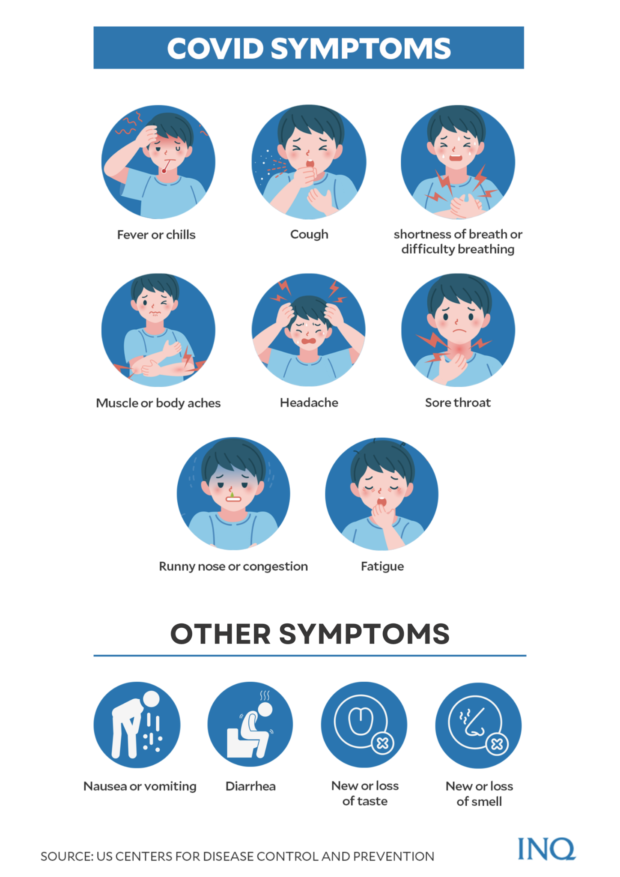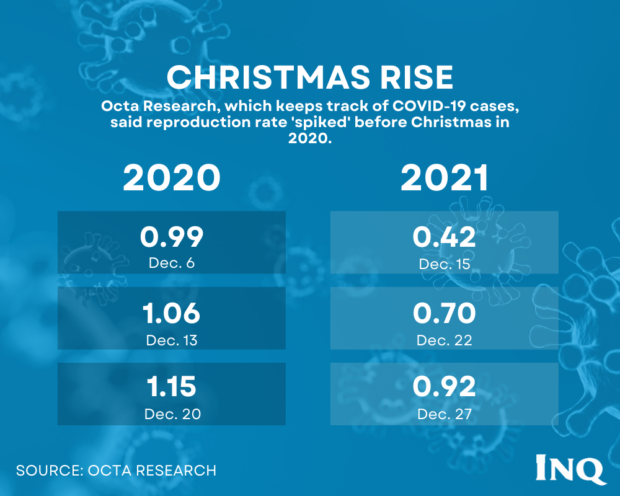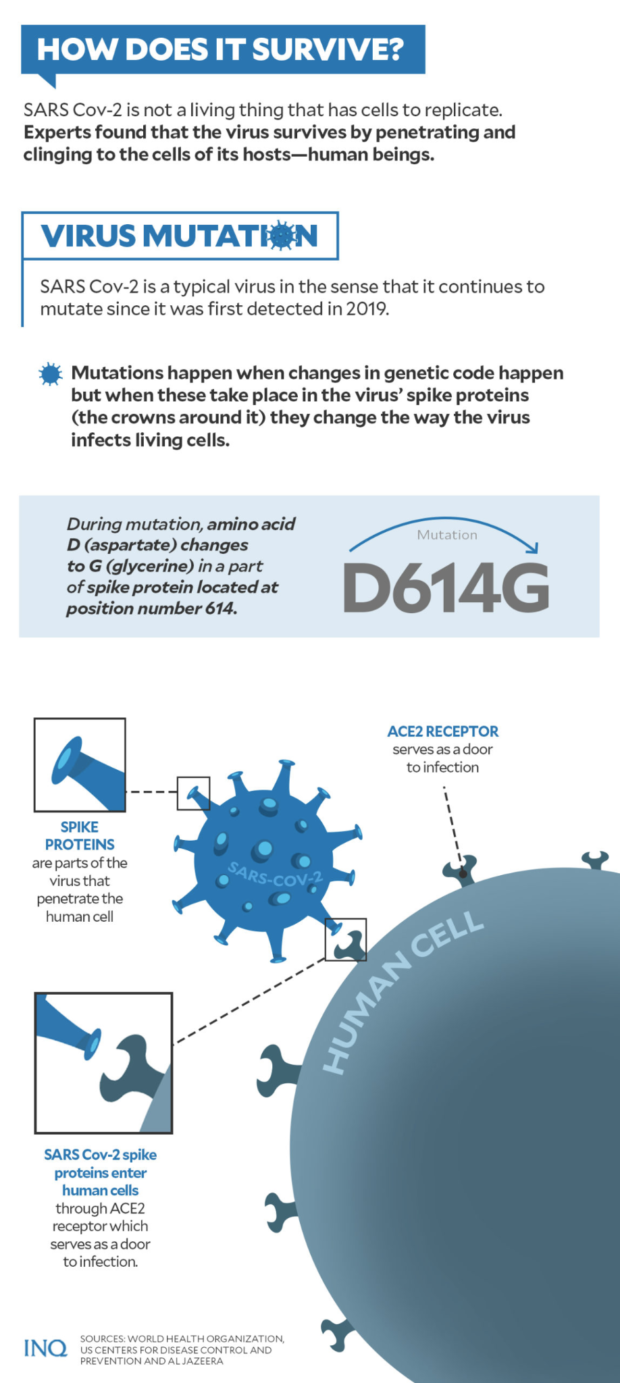Complacency is a threat bigger than Omicron, say health experts
MANILA, Philippines—Is it the highly contagious Omicron?
READ: Omicron: What science knows so far about latest Greek-lettered COVID variant
As the Philippines celebrated Christmas, Octa Research, which keeps track of COVID-19 cases, said the reproduction number in Metro Manila of SARS Cov2, the virus that causes the disease, has increased to 0.92, higher than the 0.70 on Dec. 22 and 0.42 on Dec. 15.
On Dec. 15, the Department of Health (DOH) confirmed that the University of the Philippines–Philippine Genome Center has detected the Omicron (B.1.1.529) variant in two individuals who arrived from Japan and Nigeria.
READ: DOH detects Omicron variant in 2 travelers from Japan, Nigeria
Article continues after this advertisementTwo other Omicron cases in the Philippines were confirmed by the DOH last Dec. 20 and 27: a 36-year-old returning overseas Filipino and a 38-year-old woman from the United States.
Article continues after this advertisementREAD: Philippines detects third case of Omicron coronavirus variant
Dr. Guido David, a fellow of Octa Research, said on Twitter that the average rate of new COVID-19 cases in Metro Manila has increased to 126 from Dec. 21 to 27, higher than 77 from Dec. 14 to 20. The positivity rate was 1.7 percent.
The rise in COVID-19 cases, however, was possibly because of the holiday season and not Omicron, David said, explaining that the rise was likely triggered by increased close contact among people celebrating the holidays.
Holiday cases
While David said Metro Manila was still “low risk,” the rates were definitely increasing, reminiscent of how COVID-19 cases spiked in December 2020, when Filipinos were preparing for Christmas.
READ: OCTA warns of uptick in NCR positivity rate
He recently said at a Laging Handa briefing that “we can’t say now that it’s driven by the Omicron because we’ve also seen this last year,” explaining that in December 2020, there was also an increase in COVID-19 cases.
On Dec. 6, 2020, the virus reproduction number in Metro Manila was 0.99. But on Dec. 13 and 20, 2020, the rate increased to 1.06 and 1.15, which Octa Research said was a sign that more people were being infected.
Reproduction number refers to the average number of people a COVID-infected person was likely to infect others while positivity rate refers to the percentage of people who test positive out of total tests at a certain period.
David said that in 2020, the reproduction number in Metro Manila spiked days before Christmas, followed by a dip–probably because many went to provinces–and then an increase by the first week of January 2021–1.13 which coincided with the return of people who had vacationed in the provinces.
He said a “continued increase” in reproduction rate “during the holidays” would indicate a pattern that was not seen in 2020.
In 2020, the Philippines had 1,885 new COVID-19 cases on Dec. 25. It went down to 1,406 on Dec. 26, 883 on Dec. 27, 766 on Dec. 28, and 886 on Dec. 29 as the DOH said the decrease was because fewer people got themselves tested.
This year, while David told ANC that COVID-19 testing was enough, “we are not seeing the complete picture” because there are closed laboratories because of the holidays and Super Typhoon Odette, which slammed into the Visayas and Mindanao.
Octa Research said five local governments–Pateros, Valenzuela, Quezon City, Pasig, and Taguig–are classified as “very low risk” while Manila and San Juan are considered “moderate risk”.
The rest of the metropolitan local governments–Caloocan, Malabon, Marikina, Parañaque, Muntinlupa, Navotas, Pasay, Mandaluyong, Makati, and Las Piñas were classified as “low risk”.
Health Undersecretary Ma. Rosario Vergeire said on Dec. 27 that cases in Metro Manila grew by 49 percent in the last week, which is still considered “minimal risk”. She said the daily tallies showed an increase of 38 cases.
Rise in cases a ‘reminder’
The DOH said the ideal reproduction rate is less than one while the World Health Organization (WHO) recommends a positivity rate of below five percent to indicate that COVID-19 transmission is controlled.
Last Dec. 26, the DOH said the positivity rate in the Philippines is two percent, the highest since November. It was only 1.1 percent on Dec. 21 and 1.4 percent on Dec. 22.
While the positivity rate is still within the five percent “benchmark” of the WHO, David said the increase in reproduction rate is a “reminder” to Filipinos that the danger is not over and the need to heed basic health protocols remains.
He said the government should assess the pandemic in the Philippines by January, explaining that it is only by then that the entire picture will be seen.
Last Dec. 6, the DOH initiated its “Ligtas Christmas para sa Healthy Pilipinas 2021” holiday campaign which aimed to remind Filipinos of ways to safely celebrate Christmas and New Year.
It said Filipinos are advised not to let their guard down and prioritize the health and safety of their families by observing basic health protocols set by the government.
“Let us continue to promote and observe the Bakuna-Airflow-Mask-Hugas-Iwas (Vaccine-Airflow-Mask-Wash-Avoid) in our events this Christmas,” said Health Secretary Francisco Duque III.
TSB
For more news about the novel coronavirus click here.
What you need to know about Coronavirus.
For more information on COVID-19, call the DOH Hotline: (02) 86517800 local 1149/1150.
The Inquirer Foundation supports our healthcare frontliners and is still accepting cash donations to be deposited at Banco de Oro (BDO) current account #007960018860 or donate through PayMaya using this link.




